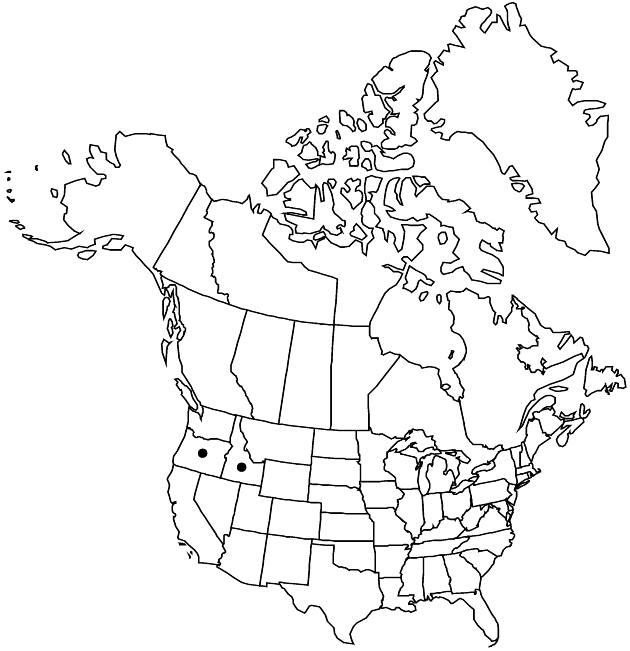Chaenactis cusickii
in A. Gray et al., Syn. Fl. N. Amer. ed. 2. 1(2): 452. 1886.
Plants 3.5–10 (–15) cm; proximal indument grayish, sparsely arachnoid, glabrescent. Stems mostly 1–5; branches mainly proximal. Leaves basal (withering) and cauline (not notably smaller or sparser distally), 1–4 cm; largest blades ± oblanceolate, plane, ± succulent, not lobed (margins entire or distally ± crenate). Heads mostly 1–5 (–12) per stem. Peduncles 0.5–2.5 cm, glabrescent distally (sparsely arachnoid early; bracts 1–2, leaflike, surpassing heads). Involucres ± hemispheric to campanulate. Phyllaries: longest 6–9 (–10) mm (surpassed by florets); outer (uniformly) sparsely arachnoid to glabrescent in fruit, not stipitate-glandular (inner apically brownish-villosulous), apices usually erect, blunt, ± rigid. Florets: corollas (diurnal) white to pinkish, 3–7 mm (± equaling cypselae; anthers exserted); peripheral corollas ± erect, actinomorphic, scarcely enlarged. Cypselae 4–6 mm; pappi of (8–) 10–14 scales in 2–3 gradually unequal series, longest scales 1.5–3.5 mm. 2n = 12.
Phenology: Flowering late Apr–Jun.
Habitat: Light-colored shrink-swell clay soils from volcanic ash and tuff, semiarid shrublands
Elevation: 700–1300(–1800) m
Distribution

Idaho, Oreg.
Discussion
Of conservation concern.
Chaenactis cusickii is known from Malheur County, Oregon, and adjacent Owyhee and Canyon counties, Idaho. Its relationship to other species is obscure.
Selected References
Lower Taxa
"longest" is not a number.